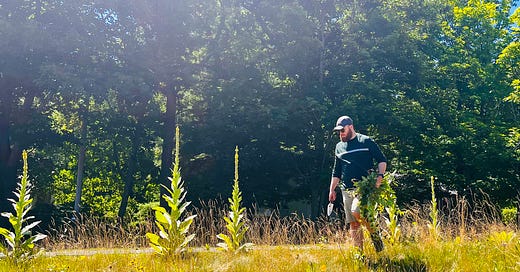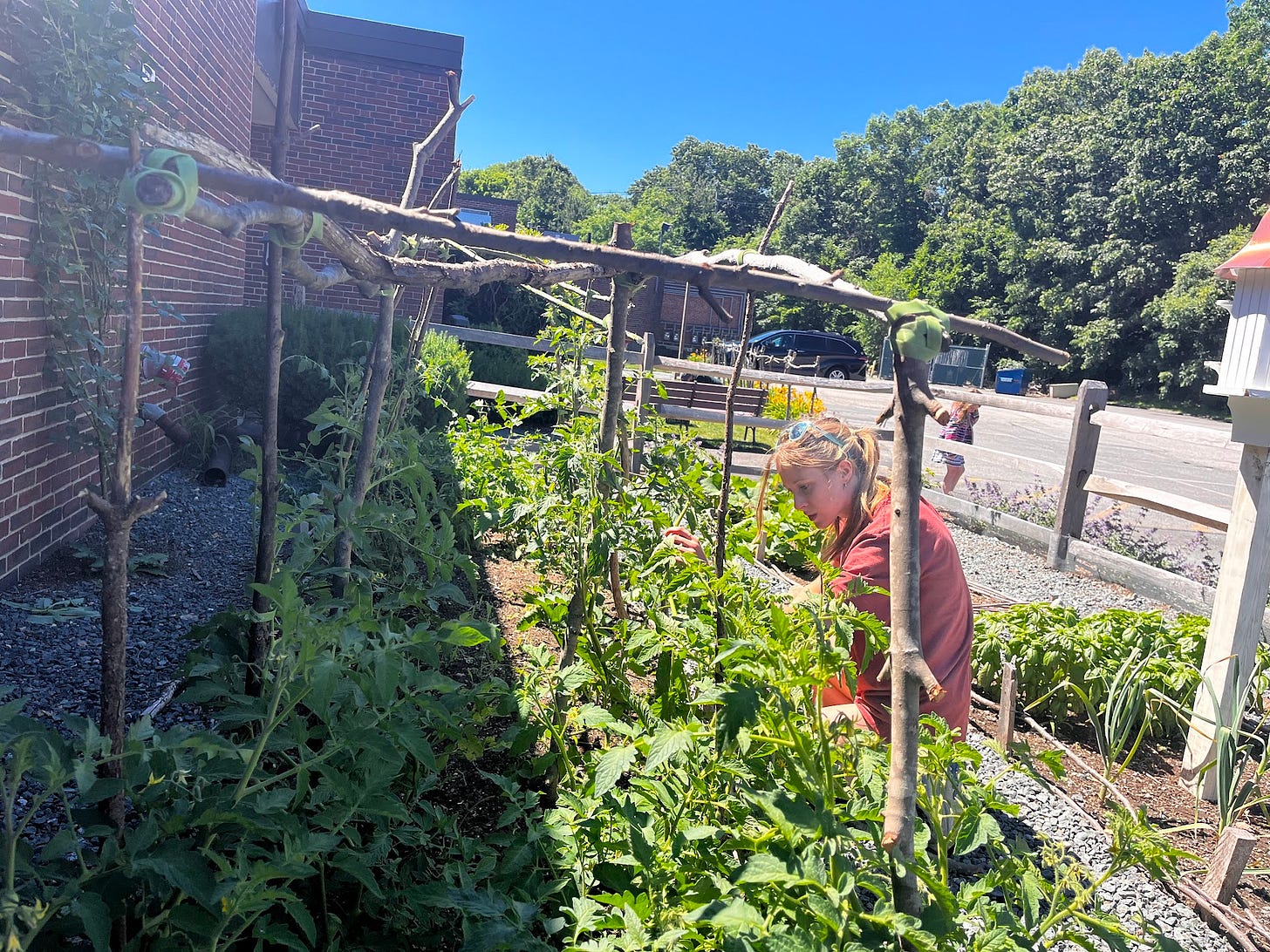There’s something intensely pleasant about driving up to the school on a summer Friday morning, past the orchard nodding with wildflowers and around to the back entrance, where a family of volunteers and one of our Prefects waits by the garden, ready to work. The little micro-climate we’ve accidentally created by situating the garden near a west-facing brick wall makes things even hotter than the surrounding area, so sweat is inevitable. But the tomatoes and herbs love it. And thanks to a few faithful student workers who water the beds every day, the whole place is thriving.
Both of the new student leaders we have in place for the Classical Roots Program are eager to deepen their knowledge and exercise their skills. Accordingly, these days I’m acting more as an advisor than a leader, giving a few directions to one of the Prefects and allowing them to supervise the families. Of course, our families bring a great deal of knowledge to the table, too, so the general spirit is one of merry collaboration. At this stage in the Program’s life, my goal is to grow it from something I’m doing that the students are helping with, to something they are doing that I’m helping with. It’s a subtle shift, but palpable and thrilling when you see it at work.
Two weeks ago, I taught one of our Prefects how to care for the many tomatoes growing wild in one of our rear plots, brutalizing the lower branches so that air and light could flow into the center. It’s painful to cut so many branches away, some of which were already laden with green fruit, but the alternative is susceptibility to disease that could kill all the plants within days. She, in turn, cared for each one, and even helped some of our volunteers to do the same. After that, we took those same volunteers—one of whom was our very own Mr. Donworth—out into the orchard to continue fighting the good fight against Asian Bittersweet.
I wasn’t even able to make it to school the following week, but that same Prefect and her mother stepped into the breach and continued weeding, pinching off tomato suckers, and generally making sure everything was healthy in my absence. For me, these moments are signs that an inflection point might be being reached: a point when the Program takes on a life of its own, understood and possessed and continued not by one or two teachers, but by a community of young people whose love and know-how will be far more inspiring than any words of mine could ever be. Here’s to that!
Like what you’re reading here? Help grow our family of gardeners, educators, and enthusiasts by referring a friend and you can earn rewards, including PDF guides to program development, access to my top gardening tips, and more:





